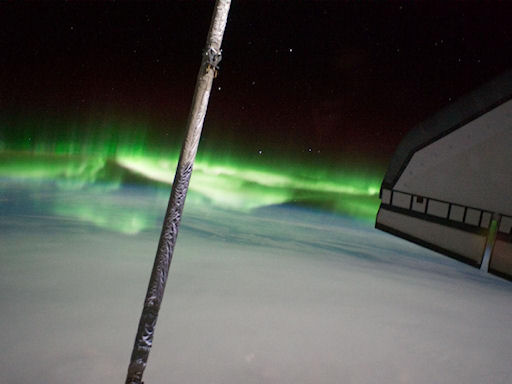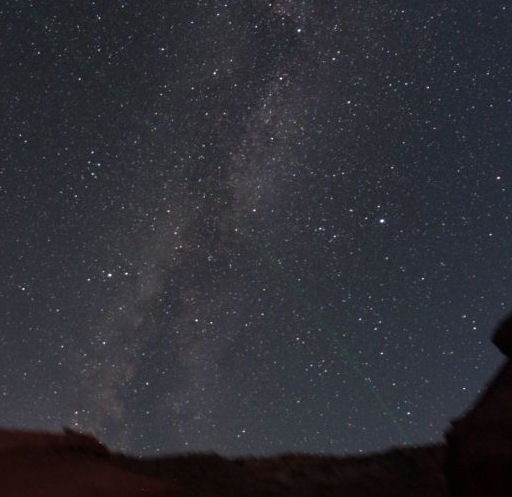Turn your cell phone into a field-tested satellite tracker. Works for Android and iPhone. | | |
CLOSE ENCOUNTER WITH VESTA: This weekend, NASA's Dawn spacecraft is entering orbit around Vesta for a year-long study of the giant asteroid. Dawn's cameras are expected to reveal a primitive world of desolate beauty from close range. As close as Dawn will be, however, you can be even closer; it's actually possible to hold a piece of Vesta in your hand. Authentic Vesta meteorites are now available in the Space Weather Store.
AURORAS UNDERFOOT: Earth orbit is a great place to watch geomagnetic storms. On July 14th, astronauts onboard the International Space Station (ISS) witnessed a broad curtain of green auroras over the southern hemisphere. This is what aurora australis looks like from space:

The picture was taken by one of the crew of space shuttle Atlantis, now docked to the ISS for the last resupply mission of NASA's 30-year shuttle program. In addition to Southern Lights, the picture also frames Atlantis's port side wing and a segment of the boom sensor system attached to the shuttle's robotic arm. See also the panoramic shot.
The display was caused by a solar wind stream which hit Earth's magnetic field on July 12th. Note to astronauts: Another solar wind stream is heading for Earth, due to arrive on July 19th-20th. The crew of Atlantis should remain alert for auroras.
BONUS: The same display was seen from Earth's surface. Robert Schwarz sends two snapshots from the Amundsen-Scott South Pole Station in Antarctica. "Absolutely amazing," says Schwarz. "These were some of the best auroras I have ever seen."
SPOOKY COMMUNICATION: "The skies over the Spanish island of La Palma offer many beauties, but on July 4th I witnessed something unusual: a ghostly green laser beam crossing the Milky Way," reports Jan Hattenbach from the Canary Islands. "I have learned that it was part of an experiment in quantum communication." Scroll past the laser for more information:

"Rupert Ursin of the Institute for Quantum Optics and Quantum Information at the Austrian Academy of Sciences explained to me that the laser was part of an inter-island quantum-cryptography experiment," says Hattenbach. "Physicists send entangled UV-photons from the Roque de los Muchachos observatory (ORM) on La Palma to the European Space Agency's Optical Ground Station 144 km away on the island of Tenerife. The goal is to demonstrate the feasibility of quantum communication over very long distances in space--e.g., to the International Space Station or other satellites.
"While the UV photons are invisible to the human eye, the green laser is not: it is used as a tracking laser or a giant laser pointer. It remained visible even in broad twilight - and made a good show together with the milky way, the morning zodiacal light and Jupiter."
Sending coded information via entangled photons? If the idea disturbs you, you're in good company. Einstein himself ridiculed the notion as "spooky action at a distance." Experiments like this one, however, show that it is possible.
2011 Noctilucent Cloud Gallery
[previous years: 2003, 2004, 2005, 2006, 2007, 2008, 2009]
June 2011 Aurora Gallery
[Aurora alerts: text, voice] [previous Junes: 2010, 2008, 2001]

